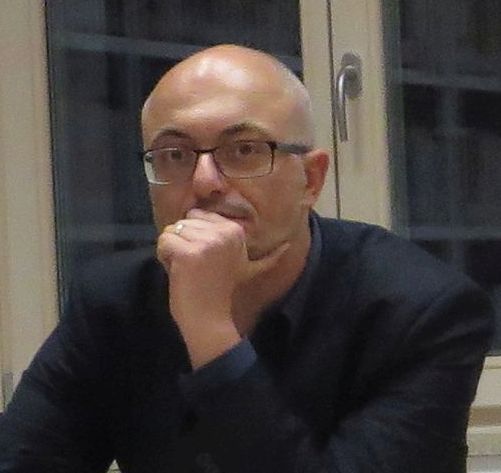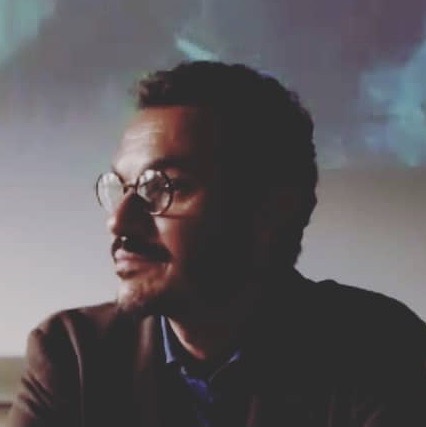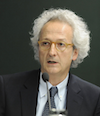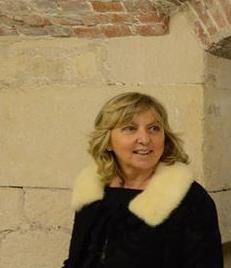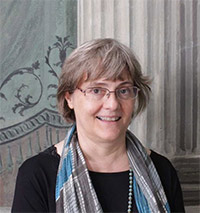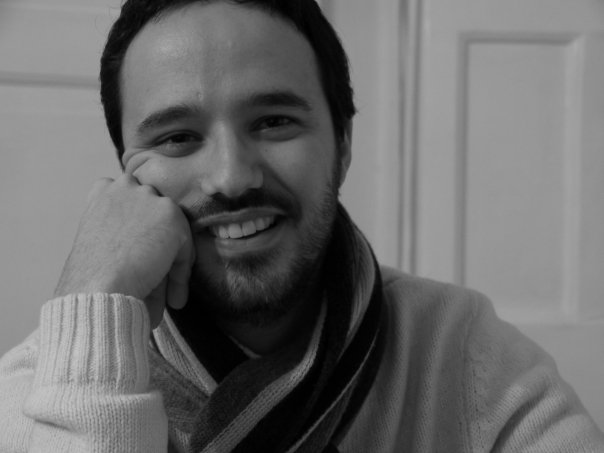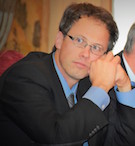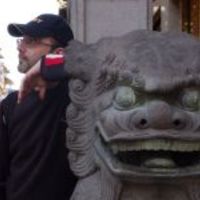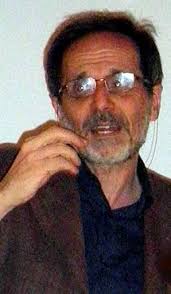Studying at the University of Verona
Here you can find information on the organisational aspects of the Programme, lecture timetables, learning activities and useful contact details for your time at the University, from enrolment to graduation.
Academic calendar
The academic calendar shows the deadlines and scheduled events that are relevant to students, teaching and technical-administrative staff of the University. Public holidays and University closures are also indicated. The academic year normally begins on 1 October each year and ends on 30 September of the following year.
Course calendar
The Academic Calendar sets out the degree programme lecture and exam timetables, as well as the relevant university closure dates..
| Period | From | To |
|---|---|---|
| Sem 1 - sede TN | Sep 14, 2020 | Dec 18, 2020 |
| CuCi IA | Sep 21, 2020 | Oct 31, 2020 |
| CuCi IB | Nov 9, 2020 | Jan 9, 2021 |
| CuCi IIA | Feb 15, 2021 | Apr 1, 2021 |
| Sem 2 - sede TN | Feb 15, 2021 | May 28, 2021 |
| CuCi IIB | Apr 14, 2021 | May 29, 2021 |
| Session | From | To |
|---|---|---|
| sessione d'esame invernale CuCi | Jan 11, 2021 | Feb 13, 2021 |
| sessione d'esame estiva CuCi | Jun 7, 2021 | Jul 24, 2021 |
| sessione d'esame autunnale CuCi | Aug 23, 2021 | Sep 18, 2021 |
| Session | From | To |
|---|---|---|
| sessione di laurea invernale 19-20 | Apr 7, 2021 | Apr 13, 2021 |
| sessione di laurea estiva 20-21 | Jul 5, 2021 | Jul 10, 2021 |
| Sessione autunnale di laurea a.a. 2020/21 | Nov 8, 2021 | Nov 13, 2021 |
| Sessione straordinaria di laurea a.a. 2020/21 | Mar 28, 2022 | Apr 2, 2022 |
| Period | From | To |
|---|---|---|
| Festa di Ognissanti | Nov 1, 2020 | Nov 1, 2020 |
| Chiusura Ateneo ponte Immacolata | Dec 7, 2020 | Dec 7, 2020 |
| Festa dell'Immacolata | Dec 8, 2020 | Dec 8, 2020 |
| Vacanze di Natale | Dec 24, 2020 | Jan 6, 2021 |
| Vacanze di Pasqua | Apr 2, 2021 | Apr 6, 2021 |
| Festa della liberazione | Apr 25, 2021 | Apr 25, 2021 |
| Festa del lavoro | May 1, 2021 | May 1, 2021 |
| Festa del Santo Patrono | May 21, 2021 | May 21, 2021 |
| Sospensione delle lezioni | May 22, 2021 | May 22, 2021 |
| Festa della Repubblica | Jun 2, 2021 | Jun 2, 2021 |
| Vacanze estive | Aug 9, 2021 | Aug 15, 2021 |
Exam calendar
Exam dates and rounds are managed by the relevant Culture and Civilisation Teaching and Student Services Unit.
To view all the exam sessions available, please use the Exam dashboard on ESSE3.
If you forgot your login details or have problems logging in, please contact the relevant IT HelpDesk, or check the login details recovery web page.
Should you have any doubts or questions, please check the Enrollment FAQs
Academic staff

Bassetti Massimiliano
 massimiliano.bassetti@univr.it
massimiliano.bassetti@univr.it
 045802 8376
045802 8376
 giovanni.bernardini@univr.it
giovanni.bernardini@univr.it
 giovanni.ciappelli@univr.it
giovanni.ciappelli@univr.it
Stegagno Carlotta
 gianmaria.varanini@univr.it
gianmaria.varanini@univr.it
Study Plan
The Study Plan includes all modules, teaching and learning activities that each student will need to undertake during their time at the University.
Please select your Study Plan based on your enrollment year.
1° Year
| Modules | Credits | TAF | SSD |
|---|
Medieval History, History of Christianity and Churches
Early Modern History I - LM (Historical Anthropology)
Contemporary History I - LM
History of Political Institutions II
History of Political Thought
History of Science and Technology - LM
History of Medieval Art I
Digital tools for historical research
2° Year activated in the A.Y. 2021/2022
| Modules | Credits | TAF | SSD |
|---|
| Modules | Credits | TAF | SSD |
|---|
Medieval History, History of Christianity and Churches
Early Modern History I - LM (Historical Anthropology)
Contemporary History I - LM
History of Political Institutions II
History of Political Thought
History of Science and Technology - LM
History of Medieval Art I
Digital tools for historical research
| Modules | Credits | TAF | SSD |
|---|
Legend | Type of training activity (TTA)
TAF (Type of Educational Activity) All courses and activities are classified into different types of educational activities, indicated by a letter.
Contemporary History I - LM [Sede VR] (2020/2021)
Teaching code
4S001218
Teacher
Coordinator
Credits
6
Also offered in courses:
- Contemporary History I - LM [Sede VR] of the course Master's degree in Arts (interuniversity)
- History of late modern Europe (m) of the course Master’s degree in Tradition and Interpretation of Literary Texts
Language
Italian
Scientific Disciplinary Sector (SSD)
M-STO/04 - CONTEMPORARY HISTORY
Period
CuCi IIA, CuCi IIB
Learning outcomes
Analysis and understanding of complex historical processes over time (including the analysis of shorter historical times in a long-term perspective) and in space (by linking the national history with the European and international ones), capturing the complexity and articulation of historical events, while being able to identify the most significant causal nodes.
Program
Learning outcomes
Atlantic Crossing: exchanges and transfers of knowledge between Europe and United States in the twentieth century
The course aims to provide an in-depth knowledge of the European history of the period 1900-1980 and of the history of political, diplomatic and cultural relations between Europe and the United States in those years. There are three crucial steps to understand the evolution of these relationships in the first half of the twentieth century: The Great War and the Thirties which saw the rise of two American presidents destined to play a central role on the world political scene namely Woodrow Wilson and Franklin D. Roosevelt and the phase that began after 1945 with the reconstruction of Europe and the beginning of the Cold War.
Particular attention will be devoted to the period between the two World Wars and to the birth and evolution of totalitarian regimes presented from a comparative and transnational perspective, covering political, cultural and intellectual history.
The central part of the course will be devoted to the analysis of the fundamental characteristics of totalitarian regimes, to the cultural and diplomatic relations with the American world, to the history of fascism from a transnational perspective, to the phenomenon of intellectual and political exile, and to the circulation of ideas between Europe and the United States in the interwar years. The last part of the course will focus on the evolution of political and diplomatic relations between Europe and United States after 1945, on the birth of a new world order and the beginning of the Cold War, and on economic development in the so-called Golden Age years of world capitalism.
By the end of the course the student must attain a high level of knowledge on: a) the periodization of the historical phases considered, b) the events that characterize the historical period considered, c) the different historical processes that totalitarianisms have generated, d) the historiographic interpretations related to these processes.
Syllabus
From the Great War to totalitarianism
1. The Great War and United States.
2. Wilsonism.
3. The post-war period and the crisis of liberal regimes in Europe.
4. Italian fascism: origins and transformations.
5. The Weimar Republic and the birth of Nazism.
6. The crisis of 1929.
The thirties
1. The New Deal: a global perspective.
2. The crisis of Europe in the interwar years.
3. The United States and the "parallel diplomacy" of fascism.
4. Exchanges and circulations of ideas between Europe and the United States.
5. The experience of exile.
6. United States and World War II.
After 1945
1. The crisis of diplomatic balance and the birth of a new world order.
2. The reconstruction of Europe.
3. The origins of the Cold War.
4. The Sixties and the cultural exchanges between Europe and the United States.
5. The Americanization of Europe.
6. The 70s-80s: protest movements and crisis of the liberal state.
Required Reading
1. One book chosen from the following:
S. Colarizi, Novecento d’Europa. L’illusione, l’odio, la speranza, l’incertezza, Laterza, 2015 (con esclusione del paragrafo 12).
K. Patel, Il New Deal. Una storia globale, Einaudi, 2018.
V. De Grazia, L’impero irresistibile. La società dei consumi americana alla conquista del mondo, Einaudi, 2006.
B. Steil, Il Piano Marshall. Alle origini della guerra fredda, Donzelli, 2018.
O. Wieviorka, Storia della resistenza nell’Europa occidentale 1940-1945, Einaudi, 2018.
2. Two books chosen from the following:
A. Testi, Il secolo degli Stati Uniti, Il Mulino, 2017.
M. Canali, La scoperta dell’Italia. Il fascismo raccontato dai corrispondenti americani, Marsilio, 2017.
J.W. Muller, L’enigma democrazia. Le idee politiche nell’Europa del Novecento, Einaudi, 2012 (e successive edizioni).
S. Cortesini, One day we must meet. Le sfide dell’arte e dell’architettura italiane in America (1933-1941), Johan & Levi Editore, 2018.
G. Borgognone, Tecnocrati del progresso. Il pensiero americano del Novecento tra capitalismo, liberalismo e democrazia, Utet, 2015.
Non-attending students must add to the above bibliography the volume:
D.W. Ellwood, Una sfida per la modernità. Europa e America nel lungo novecento, Carocci, 2012 (con esclusione del cap. 10).
Teaching Methods
Lectures, guided tour to museums and archives, projections of movies and documentaries, lessons with external guests, seminars.
The partecipants can prepare brief paper to present in class.
Examination Methods
Examination procedure
1. The assessment is based on an oral exam.
2. Students must demonstrate their capacity in using historical concepts and the appropriate language. They must also demonstrate their ability to make connection between different historical processes, both national and international.
3. Questions will be based on the most important topics discussed during the lessons and suggested in the literature.
4. Assessment method: a final mark from 18 to 30/30.
Type D and Type F activities
Modules not yet included
Career prospects
Module/Programme news
News for students
There you will find information, resources and services useful during your time at the University (Student’s exam record, your study plan on ESSE3, Distance Learning courses, university email account, office forms, administrative procedures, etc.). You can log into MyUnivr with your GIA login details: only in this way will you be able to receive notification of all the notices from your teachers and your secretariat via email and soon also via the Univr app.
Linguistic training CLA
Double degree
The University of Verona, through a network of agreements with foreign universities, offers international courses that enable students to gain a Double/Joint degree at the time of graduation. Indeed, students enrolled in a Double/Joint degree programme will be able to obtain both the degree of the University of Verona and the degree issued by the Partner University abroad - where they are expected to attend part of the programme -, in the time it normally takes to gain a common Master’s degree. The institutions concerned shall ensure that both degrees are recognised in the two countries.
Places on these programmes are limited, and admissions and any applicable grants are subject to applicants being selected in a specific Call for applications.
The latest Call for applications for Double/Joint Degrees at the University of Verona is available now!
Graduation
List of theses and work experience proposals
| theses proposals | Research area |
|---|---|
| Ambiti di tesi | Art & Architecture - Art & Architecture |
Student mentoring
Student login and resources
Manifesto degli studi
Manifesto degli studi del CdLM interateneo in Scienze storiche
Documents
| Title | Info File |
|---|---|
|
|
pdf, it, 466 KB, 26/02/24 |
|
|
pdf, it, 456 KB, 26/02/24 |


